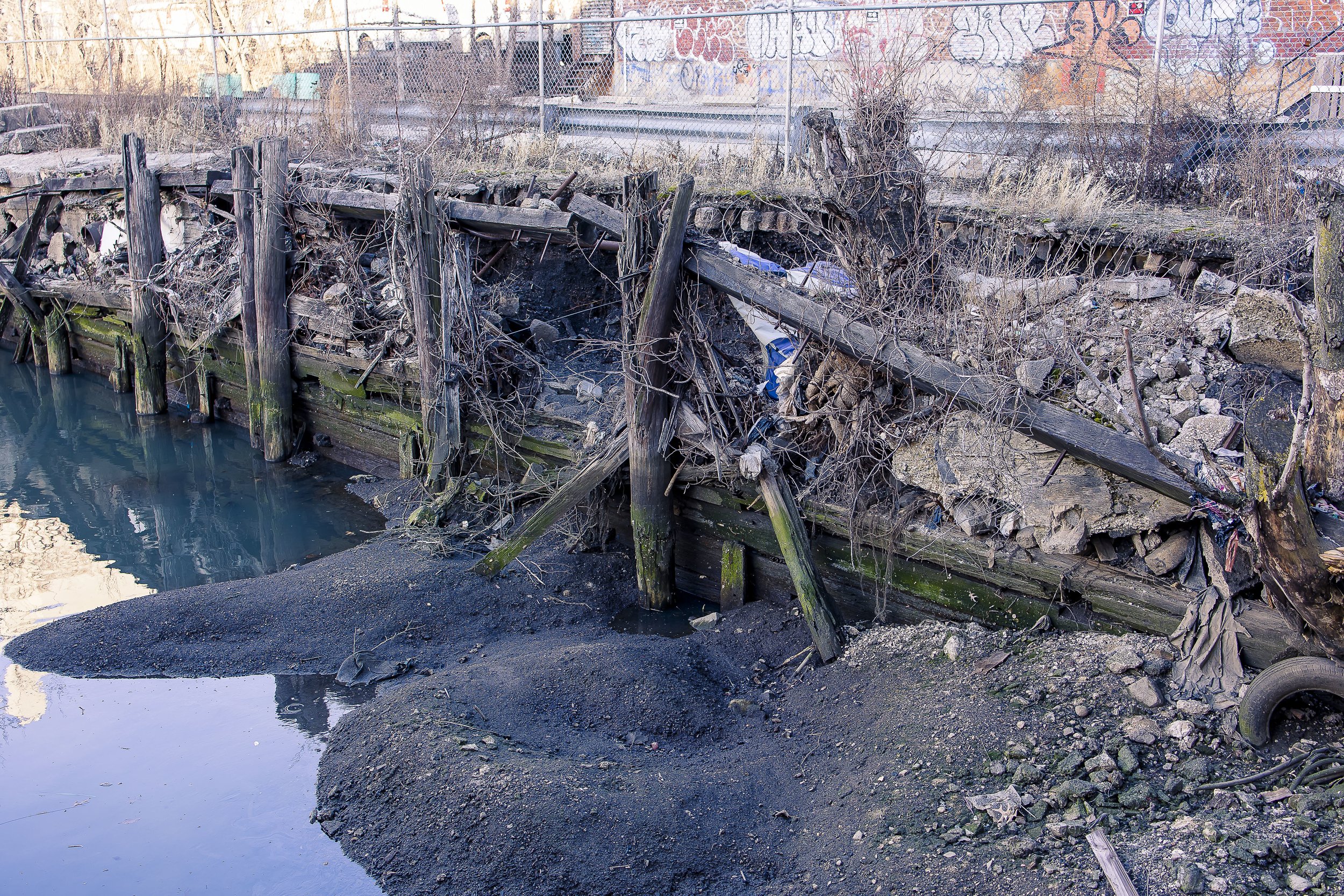Newtown Creek collapse renews request for revitalization
/Advocates and elected officials are joining together to call on the city to take action in response to crumbling infrastructure along a Newtown Creek offshoot. Photo courtesy of Newtown Creek Alliance
By Rachel Vick
Queens is one small part of New York City’s waterfront, but portions of the old infrastructure keeping the element at bay are starting to crumble.
On 29th street near the Dutch Kills tributary of Newtown Creek, a portion of the retaining wall along the road has collapsed into the waterway — exacerbating street flooding and increasing risk to the adjacent road — the third round of collapses on the shoreline in recent years, advocates, Queens lawmakers and local business leaders told city and state officials in a Feb. 15 letter.
“It’s slowly decaying and falling into the water,” Willis Elkins, executive director of the Newtown Creek Alliance, told the Eagle. “Unfortunately this last round of erosion is very close to the active roadway so … everyone is very concerned about the public safety implications.”
“It's not a random act of occurrence, it's there because of decades of neglect and that has impacted the creek and the community,” he said. “By rebuilding the shoreline [in a way] that meets the asks of the community to reconnect us is a step in the right direction but we need strong leadership to make that happen.”
The street is owned by the Metropolitan Transit Association and managed by the Department of Transportation, and the oversight of the creek is impacted by ongoing efforts from the Department of Environmental Conservation to clean up the superfund site.
Concerned locals are asking the agencies to address the safety concerns while taking advantage of the opportunity to plan for the future and develop a usable waterfront. A solution, the letter says, must be a multifaceted approach rooted in equity for the environment and community alike.
Stakeholders form local business groups like the Long Island City Partnership are in favor of the benefits that would come from a usable waterfront, administrators from neighboring LaGuardia Community College support an accessible space for their environmental science students to research the creek without trekking to Brooklyn, and environmental advocates are hoping for changes to support a cleaner habitat.
“There's a lot of desire and has been for many years about creating access and that's been the most ideal spot given public land and proximity,” Elkins said. “For us it’s two conversations; there's an immediate concern about the erosion and that this is an opportunity to finally deliver instead of the agencies not investing and ignoring — using it as an opportunity to turn it into an asset.”
“What we've seen too often with reconstruction projects is that the easiest and cheapest solution does not create access to the waterway,” he added, lamenting the lack of green space and pedestrian access. “If they do a repair and go that route they'll be creating further barriers for decades to come.”
The warning was only the latest in a series issued by the Newtown Creek Superfund Community Advisory Group to the agencies, and features support from elected officials including State Sen. Michael Gianaris and Borough President Donovan Richards, whose office reiterated their staunch support of revitalization.
Shoreline reconstruction suggested in the letter included extending the native marsh and replanting greenery to support a healthy ecosystem in the waterway that was used for decades to dump untreated sewage.
The letter suggests that restoring natural habitat would require less maintenance and do double duty by acting as filtration to aid in the ongoing cleanup of the water while supporting the return of wetland wildlife.
The nearly 4 mile Creek bordered by Queens and Brooklyn was once a hotspot for commercial vessels, factories and was one of the busiest ports during World War II, according to the DEC, and the disruption of the natural flow resulted in the concentration of toxins. It is now designated a Superfund site — marking high levels of contamination — after a series of investigations began in 2011.
“The state of pollution is not going to be there in the future,” Elkins said. “We need to be thinking long term about this because it will be a much more ideal place for interaction with the waterway… but if we’re treating the shoreline like it’s the creek of 30 years ago it’s not a good approach.”
He told the Eagle the MTA said that they were exploring measures to prevent further collapse by limiting parking near the shoreline to try and reduce the load.
MTA Spokesperson Eugene Resnick told the Eagle the agency “appreciates the concerns of the Newtown Creek Alliance and is collaborating with State and City partners to determine the best course of action for protecting the integrity of the bulkhead.”
The DOT did not respond to request for comment.




